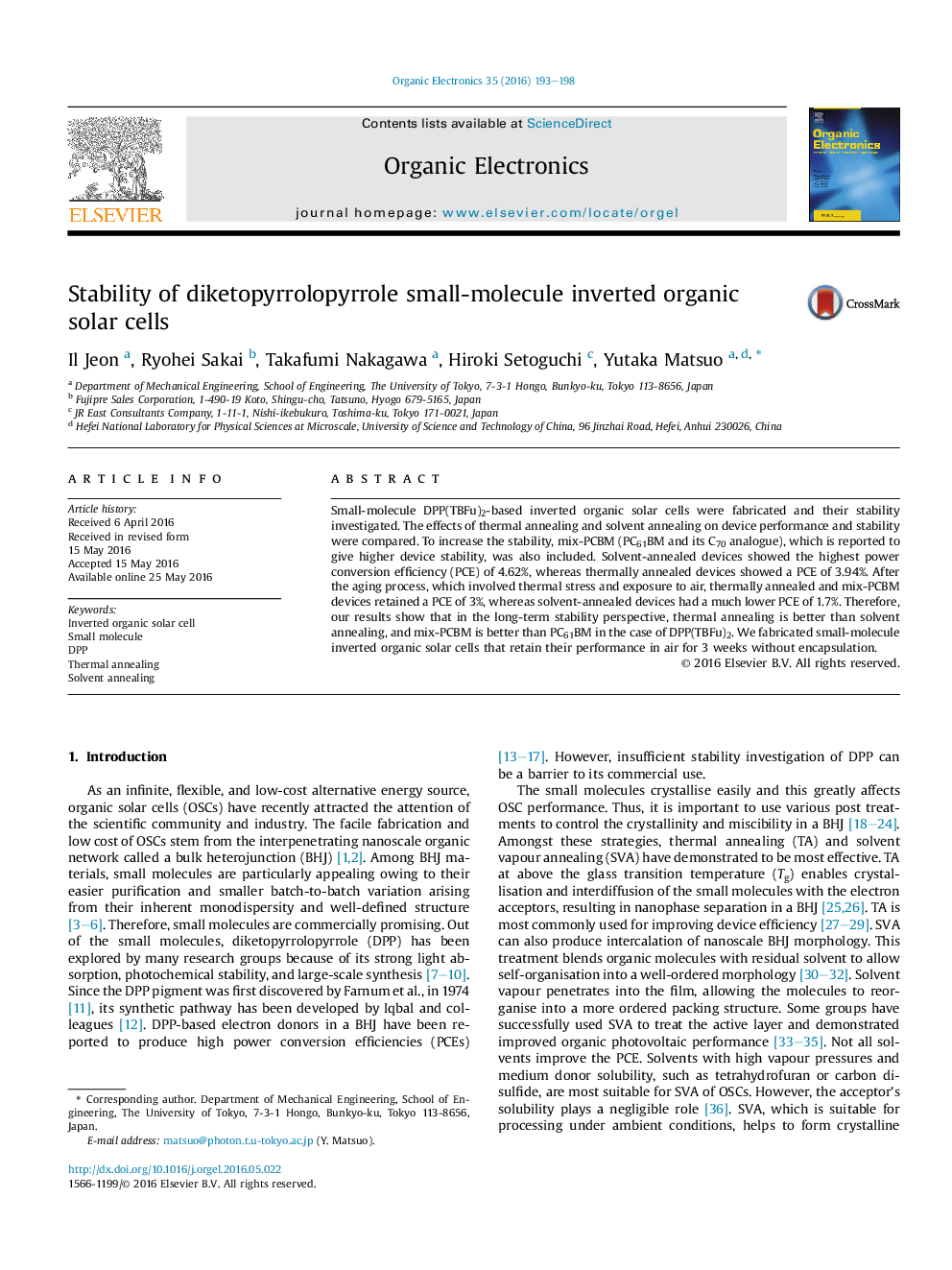| Article ID | Journal | Published Year | Pages | File Type |
|---|---|---|---|---|
| 1266820 | Organic Electronics | 2016 | 6 Pages |
•Stability of DPP(TBFu)2-based inverted organic solar cells was investigated.•The effects of thermal annealing and solvent annealing on the stability were studied.•The uses of mix-PCBM and PC61BM on the stability were compared and analyzed.•Solvent-annealed devices showed high initial efficiency (4.62%) with low stability.•Yet, thermally annealed mix-PCBM-based devices retained 3% efficiency over 3 weeks.
Small-molecule DPP(TBFu)2-based inverted organic solar cells were fabricated and their stability investigated. The effects of thermal annealing and solvent annealing on device performance and stability were compared. To increase the stability, mix-PCBM (PC61BM and its C70 analogue), which is reported to give higher device stability, was also included. Solvent-annealed devices showed the highest power conversion efficiency (PCE) of 4.62%, whereas thermally annealed devices showed a PCE of 3.94%. After the aging process, which involved thermal stress and exposure to air, thermally annealed and mix-PCBM devices retained a PCE of 3%, whereas solvent-annealed devices had a much lower PCE of 1.7%. Therefore, our results show that in the long-term stability perspective, thermal annealing is better than solvent annealing, and mix-PCBM is better than PC61BM in the case of DPP(TBFu)2. We fabricated small-molecule inverted organic solar cells that retain their performance in air for 3 weeks without encapsulation.
Graphical abstractFigure optionsDownload full-size imageDownload as PowerPoint slide
